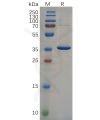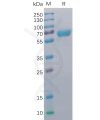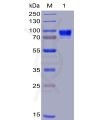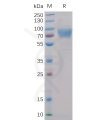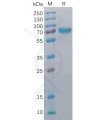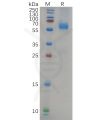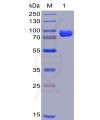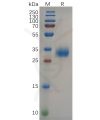| Target | |
|---|---|
| Synonyms | Fibroblast Growth Factor 9;FGF-9;Glia-Activating Factor;GAF;Heparin-Binding Growth Factor 9;HBGF-9;FGF9 |
| Description | Recombinant Human Fibroblast Growth Factor 9 is produced by our E.coli expression system and the target gene encoding Met1-Ser208 is expressed. |
| Delivery | In Stock |
| Uniprot ID | P31371 |
| Expression Host | E.coli |
| Tag | |
| Molecular Characterization | Not available |
| Molecular Weight | 23.44 KDa |
| Purity | Greater than 95% as determined by reducing SDS-PAGE. |
| Formulation & Reconstitution | Lyophilized from a 0.2 μm filtered solution of 20mM PB, pH 6.0. |
| Storage & Shipping | Store at -20°C to -80°C for 12 months in lyophilized form. After reconstitution, if not intended for use within a month, aliquot and store at -80°C (Avoid repeated freezing and thawing). Lyophilized proteins are shipped at ambient temperature. |
| Background | Fibroblast Growth Factor 9 (FGF-9) belongs to the Fibroblast growth factor (FGF) family. FGF family members possess broad mitogenic and cell survival activities, and are involved in a variety of biological processes, including embryonic development, cell growth, morphogenesis, tissue repair, tumor growth and invasion. FGF-9 plays an important role in the regulation of embryonic development, cell proliferation, cell differentiation and cell migration. In addition, FGF-9 may have a role in glial cell growth and differentiation during development, gliosis during repair and regeneration of brain tissue after damage, differentiation and survival of neuronal cells, and growth stimulation of glial tumors. |
| Usage | Research use only |
| Conjugate | Unconjugated |
Human FGF-9 Protein
Price: 50 μg $400.00
Product Data Dima FAQ
Images Dima FAQ
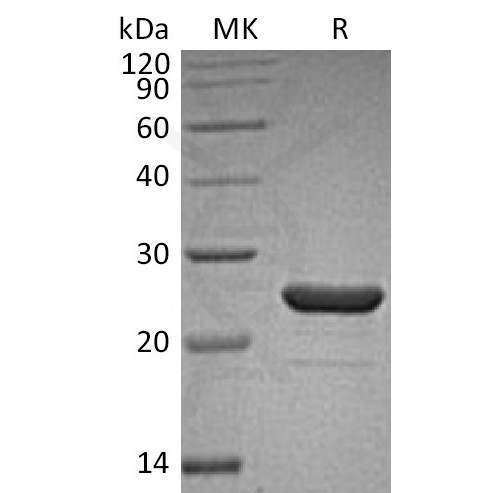
Figure 1. Greater than 95% as determined by reducing SDS-PAGE.
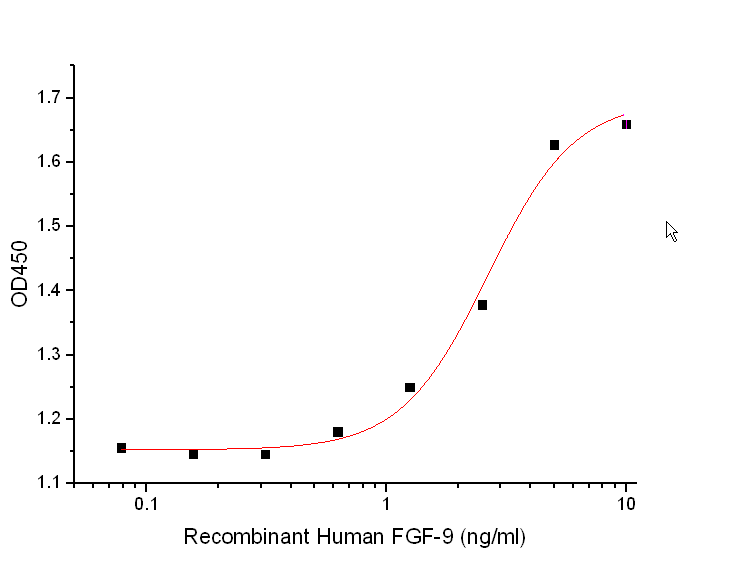
Figure 2. Measured in a cell proliferation assay using Balb/3T3 mouse embryonic fibroblast cells.The ED50 for this effect is 1-5 ng/ml.
Related Products
ECD Proteins
SKU: PME100648 Target: NEFL Tag: N-6×His Tag
Price: 10μg $82.00; 50μg $320.00 ; 100 μg $480.00
ECD Proteins
SKU: PME100016 Target: CD48 Tag: C-Mouse Fc and 6×His Tag
Price: 10μg $91.00; 50μg $348.00 ; 100 μg $522.00
ECD Proteins
SKU: PME100003 Target: CD123 Tag: C-Human Fc and 6×His Tag
Price: 10μg $78.00; 50μg $310.00 ; 100 μg $460.00
ECD Proteins
SKU: PME100010 Target: 2B4 Tag: C-Mouse Fc and 6×His Tag
Price: 10μg $78.00; 50μg $310.00 ; 100 μg $460.00
ECD Proteins
SKU: PME100017 Target: CTLA-4 Tag: C-Mouse Fc and 6×His Tag
Price: 10μg $96.00; 50μg $370.00 ; 100 μg $555.00
ECD Proteins
SKU: PME100015 Target: CD40 Tag: C-Mouse Fc and 6×His Tag
Price: 10μg $82.00; 50μg $320.00 ; 100 μg $480.00
ECD Proteins
SKU: PME100657 Target: Nucleocapsid Tag: C-6×His Tag
Price: 10μg $72.00; 50μg $272.00; 100μg $409.00
ECD Proteins
SKU: PME100004 Target: CD38 Tag: C-Human Fc and 6×His Tag
Price: 10μg $78.00; 50μg $310.00 ; 100 μg $460.00
ECD Proteins
SKU: PME100647 Target: S protein RBD Tag: C-6×His Tag
Price: 10μg $72.00; 50μg $272.00; 100μg $409.00

